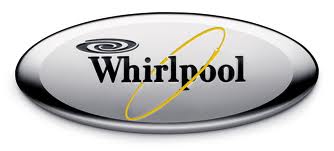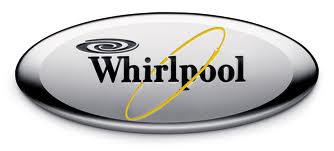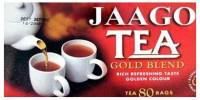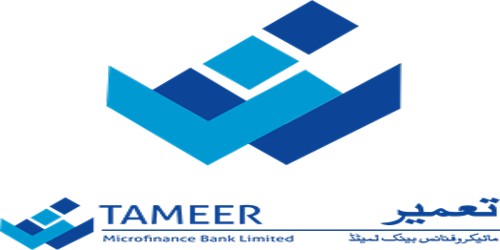Whirlpool Corporation their strategy was based on the assumption that, in spite of the differences in consumer habits and preferences, it was possible to gain competitive advantage by leveraging a global presence in the various regional markets. This ‘Regionalization Strategic Approach’ allowed them to worldwide expansion for which they are now operating their business in more than 140 countries.
For their convenient they divided the whole world into four different regions. These are: North America (Canada, Mexico, USA), Europe (Western, Central and Eastern Europe, Africa and the Middle East), Asia and Latin America.
Depending on the customers, markets, demand, political stability, economic growth and so on in different regions they followed different strategic approach:
Whirlpool in North America:
Strategic approach: A strategic approach called “Dominant Consumer Franchise (DCF)” was introduced for North America region that required better understanding of consumer needs, improving product quality and keeping appropriate pace with price. That is; the objective is to become more customers focused.
– Business structure: In this region Whirlpool followed the “Global Functional Structure”. Because, in this region they found out that the products and customers are almost similar.
– Later on they modified the structure a bit which employed cross-functional team within each function. This was to increase more customer satisfaction.
– Following this structure and strategy they were able to segment their customers; for e.g.; products for the ‘traditional’, and for the ‘achiever’.
Whirlpool in Europe:
– Whirlpool introduced them in the Europe through joint venture with Phillips and later on they were able to establish their own brand name.
– Strategic approach: They followed the “Customer Focused Business” strategy and ‘Brands’ were positioned to fit the niches and conditions in Europe – this approach was also applied in the US.
– In the Europe Whirlpool was able to operate business in different countries. But the problem was the customers were different in different countries and so were their tastes, needs, norms and so on. But’ before changing the product line Whirlpool tried to generate an idea among them to put systems support (functionality) in place so that they could deliver products more accurately and in a more timely manner.
– Business structure: In Europe Whirlpool was following “Global Functional Structure”. They had one marketing division, one manufacturing division and one product group structure and development division for technology. So this was cost-effective for them in production process.
Whirlpool in Latin America:
– Strategic approach: to take the full advantage of this large market, Whirlpool positioned its brands across the entire emerging market through “customers for life” strategy.
– In order to increase the market volume and economies of scale and to get the highest financial return, Whirlpool formed a wholly owned subsidiary to contract marketing and industrial activities which was done by whirlpool overseas corporation.
Whirlpool in Asia:
– Entry strategy in Asia: market entry was supposed to occur through joint ventures, to be followed later by “Greenfield” plants. Based on commonalties identified in the region, Whirlpool planned to use a pan-Asian platform, modified for specific areas to meet regional preferences. In contrast to other regions, only one brand name-Whirlpool- would be used since the market was not considered mature enough to allow for a multi brand approach.
Also china became the center of a series of join ventures combined with plant expansions and upgrades. These moves marked an important milestone in that they completed Whirlpool’s T-4 strategy.
– Strategic approach: Whirlpool’s Asian strategy rested on the “Five Ps” – Partnership, Products, Processes, People and Pan Asian approach. The strategy was broken into three phases: starting, building and market leadership; based on extensive market research.
– Business structure: A regional headquarters was established in Tokyo and later moved to Singapore, which also became the home of a pan-Asian marketing, product development, and technology center. The Asian market was further subdivided first into three, then four, operating regions: Greater China, based in Hong Kong, South Asia based in Delhi (India and surrounding market); North Asia based I Tokyo and Southeast Asia based in Singapore (Australia and New Zealand). In this region the Whirlpool is also following functional structure with product structure at the same time.
| Whether Whirlpool’s Strategic Approaches make sense |
The strategic approaches, the Whirlpool is following in different regions are all right, but to some extent it is not. For instance, they can change some of their strategies and product line in order to get higher financial return and thus expand their market worldwide.
| Alternative approaches: Benefits and Risks |
Global Integrative Strategies:
Whirlpool can introduce ‘Global Integrative Strategies’. They are operating their business in more than 140 countries in the world. So, they can allow their products to be integrated all over the world
For example, whirlpool’s manufacturing department can be in Brazil, China and India, for availability of cheap labor force, raw materials and so on.
Benefits:
- Cost – effective products
- Gaining economies of scale
Risks:
As Whirlpool is having many product lines, so it will be very difficult to integrate so many products.
- May loose customer satisfaction
– ‘Global Functional Structure’ in the North America and Latin America region:
It is seen that Whirlpool customers in the North America are almost the same and so within the Latin America region. So they can use ‘Global Functional Structure’ in these regions.
Benefits:
- This is cost-effective and thus will help to gain economies of scale.
‘Global product structure’ in Europe:
Whirlpool is operating their business in many countries in Europe region. Their problem is their customers in this region are totally different based on their country of origin. This home appliance company is supposed to have a big product line in order to gain the customer satisfaction.
Benefits:
1. Will be beneficial for Product development And research
2. SBU or Strategic Business Unit of a particular organization will be charging for each product, that is; what should be marketed where.
Risks:
- It can be very expensive.
– ‘Global Geographic Area Structure’ in Asia:
As most of the countries in Asia are developing countries with political instability and they are having sensitive cultural base, so ‘Global Geographic Area Structure’ can be appropriate in this region.
Benefits:
1. CEO of a particular country is responsible for the country’s profitability
2. Sales go up for every CEO will be concentrating on their own country.
Risks:
- Company will be unable to gain competitive advantage.
| Weather Whirlpool’s assertion of the strategic advantages of being a global competitor justified: |
As we have gone through the case “ whirlpool quest for global leadership”, we have found that the company became global not in a day but it took them long time to get into international market. Whirlpool, a multinational company that operates in 12 countries with its plants, and it distributed its products in over 140 countries under 28 brand names. This is all about the facts during the year 1996, when the company already has a strong position in the global market. But if we consider the time and try to find out the past in 1911, when the company yet to join the global business, we will see that the company only had been producing some machines for domestic demand. At that time Whirlpool has a global vision, and following that vision the company went through implementing different effective strategies, took some global approaches and maintaining high level of standard to create brand loyalty. If we see the time-to-time strategic implementation of the company and also read the background of the company, we will definitely see that Whirlpool got success in the global competition to claim them the second largest brand next to Coca Cola.
Whirlpool’s assertion of the strategic advantage of being a global competitor is justified if the strategic implementation in different regions by the company has been observed. The company took lots of steps and also came up with different ideas that push them on to the top of the global competition. We have found a lots of strategies in the case that gave us the idea about industry structure, back ground, strategies, different regional activities, comparative advantages, factors of competition, innovation, globalization etc. we have found lots of similar activities that we have learnt through out the course about the global activities of any company. In the following we are try to match them up with the practical experience of Whirlpool.
Concerning the competitiveness of the global market, Whirlpool had some objectives to gain the competitive advantages in the globalization. The major objectives followed by the company are—
- Acquisition
- Cost minimization in production
- Monitoring margins
- Achieving economy of scale
- Focusing factories where each plan produced one product category only, concerning all price points.
- Maintaining higher quality to create brand loyalty.
- Diversification of products for different regional demands.
- Innovation of new ideas into products that satisfy the customers.
- Research on products to cope up with the global competition keeping cost low in just in time delivery.
- Technological advancement etc.
Here we have some reasons of the company for joining the global market. We have found some pro-active and reactive reasons from the case and the lecture as well. Among the pro-active reasons international competition and customer demand are more important. In this concern there are some focus In global competition through out the case. Whirlpool was concerning more on the reactive reasons. They are.
- Economy of scale: This is one of their objectives as well. Whirlpool always focused on having economy of scale in both production and management.
- International market: From the beginning of the company, Whirlpool’s vision was to gain international market competition.
- Resource access: when Whirlpool invests in different regions through out the world, it tried to utilize all the resources available in the least cost.
- Cost savings: This became a major concern for the company in lowering the production cost to gain competitiveness in the global market.
The strategies that have been maintaining by the company have a similar shape of organization structures and coordinating system. Concerning this issue we have some variables of Whirlpool’s structure that helped the company grow in the international competition. These variables includes the firm’s strategy, size, technology and cultural attitudes, business practices etc. in this case we have all these variables in the activities of Whirlpool. If we analyze the adopted strategies by the company on the basis of the integrated global structures, we will find a big snapshot in the implementation of different stages in globalization.
- Global functional structures: Whirlpool has good functional structures in the global market in which it posses similar products and customers in all market. Here as we find from the case that the company captured the European market which has similar kinds of product demand and similar types of customers. That is why the company has an advantage of having economy of scale through the global functional structure. We already know that the culture, life style, earning, technology, demand of the customers, appreciation of different products in the European region are similar. That is why Whirlpool has gained competitive advantages having all these common form of global structure.
- Global product structure: Global product structure is applicable where a company has many product lines. In this case we have got that Whirlpool has many product line in different regions and also in the same regions. If we consider the European market, Whirlpool has different product lines that are able to meet the customer demands. In the Asian region the company has also a different product lines to make sure that it cope up with different cultures and also in different situation. In the Asian regions the company mostly targeted the India and china since they have a large number of population. Concerning this issue whirlpool decided to go for research and development. They had invented new low cost, light and high efficient products to meet the demand of the low-income level, different cultural people.
- Global geographic area structure: the company in all different regions applied global geographic structure. In all the countries, the company has regional manager who was responsible for country profitability. In the case there is same strategy on global geographic area structure that followed by the company.
In the following we have discussed major regional strategies followed by the company itself on the basis of different region.
In January 1985, the company increased its equity interest in ingils, which dated back to 1969, from 48% to more than 50%. In the late 1950s, Whirlpool had undertaken its first expansion beyond the U. S borders when it entered Brazil, following by Canada. Globalization really took place in the 1980s when Whirlpool added Mexico, India and Europe through a series of joint venture. They also move to South America and Asia. In this global market they have a commitment to continuos quality improvement and to exceeding all of their customers expectation. They then gave competitive advantage through this and by building on our existing strength and developing new competencies, they set their strategy to be market driven, efficient and profitable. Their target was to make Whirlpool a company that worldwide customers, employees and other stakeholders can depend on.
In discussing these issues Whirlpool has all these competitive advantages that they had used to gain the market competition and have profitability. If we consider their series of success, we must admit that the assertion of the strategic advantages of being a global competitor justified.
| Whether CEO Whitwam is right or wrong when he claims that the U.S. and European white goods industries are very similar: |
Similarities between Europe and U.S white goods industries:
During 1970s and 1980s, the white goods industry of Europe and U.S were nearly similar. They were producing and selling mostly in one national market and their extend was limited. One most important product among the home appliance was the washers, which was nearly same in these two areas according to it’s demand. In both Europe and U.S the consumers are cost conscious, so less expensive brands are most preferable. And though the competitors are different but the competitions are nearly same in these two industries for market share. There are also other similarities among market structures, competitions and some other factors. So, it can be assume that it is possible to gain competitive advantage in both these areas, though there are multiple differences among consumer habits, preferences and in other factors.
Dissimilarities between Europe and U.S white goods industries:
But when we see the dissimilarities among U.S and European market it shows the opposite.
Market segmentation (Choices): European markets are very much divided in different segments because almost for all types of products the consumer choices are different.
In Europe, French people used to cook in high temperature, and Germany’s people prefer low temperature cooking.
Northern Europeans used to shop only once in a week. So, they need bigger refrigerator compare to Southern European who shop daily, as a result they need small refrigerators for their foods. So, the market of Europe is segmented for different choices compared to U.S.
In France, they prefer top loader, and Western Europe prefers front loaders for their washing machine. And for the temperature of washing is also different. But in U.S the consumer choices and preference is nearly same. So, the market is not that much segmented like Europe.
Market segmentation (Habits and Preferences): There are a lot of dissimilarities in European and U.S consumers habits and preferences. For washing machines the European’s choice is smaller one, on the other hand, American people prefer big model, because there they can put a lot clothes at a time.
Distributions system: According to manufacturing, procurement and marketing, European markets are of small individual market for respective countries. They distribute by two channels, one is retail trade with independent retailers, who work through buying groups and chain stores and another one is kitchen trade with entire kitchen package with kitchen specialist. In the other hand, U.S distribution was directly through contract sales to homebuilders and to other appliance manufacturer’s, directly/indirectly local builder’s suppliers.
The major competitor companies in Europe are Electrolux Zanussi, Philips Baukknecht, Bosch-Siemens, Merloni-indesit, Thomson and AEG. But in U.S, GE, Electrolux, Raytheon and Maytag are operating as major competitors.
From all these similarities and dissimilarities, the dissimilarities are more prominent and more accountable in appliance industry’s operations, so we can see that the U.S and European white goods industries are not very much similar as CEO Whitwam claimed.
| Reason for the merger and acquisitions in the USA and European appliance industry: |
Reactive reasons:
- International competition: International competition arises when a company from one country goes for manufacturing in other country. So the second country needs to go to the first country or need to merge to cope with the situation. In USA the appliance industry was highly competitive because of the domestic and foreign competition. The competitors were Korean, Japanese and European appliance industries. More over the appliance industries was so competitive that no single domestic manufacturer could keep an innovation to itself for more than a year without patent. So the big five-appliance company decide to merge with European companies to cope with the international competition as well as to enlarge existing facilities.
- Trade barriers: When companies go for globalization, the trade and tariff barrier has become an important issue. So the government regulation outside the United States is also very significant because the environmental standard prevailing in the European community would become a law in the United States. To avoid the trade barrier the appliance industries of USA merge with the European industry.
- Regulation and restrictions: If the home country may have regulation and restriction upon particular product then domestic industry can merge with foreign company and sell product in other country. In USA government have regulation upon appliance industry, national Appliance energy Conservation Act limited energy consumption and reducing energy uses by 25% in every 5 years. More over the ozone-depleting CFCs force the industry to redesign its refrigerators, washer and dishwasher to reduce water consumption and noise level. So USA’s companies merges with Europe to sell their products in Europe to avoid government restriction.
- Customer demand: Though the demand of appliance of USA is unattractive but the customers of USA prefer the style of European appliance because of its fashionable white-on-white look. In other hand, almost 320 million customers were in Europe for the appliance industry and the saturation level was not as Canada and the United States. Appliance demand was expected to grow 5% annually. Moreover they have a strong buying power. European customer prefer USA appliance manufacturer because European producers delivered significantly lower level of customer satisfaction.
Proactive reasons:
- Economies of scales: If we set up a plant in any country and produce more, then the research and development cost decrease and economies of scale achieve. The life style of consumer in major industrialized countries is almost similar and have increasingly similar expectations of what customer products must do for them. As purchasing patterns are almost alike, the companies that operate on a broad global scale can leverage their strength to achieve the economies of scale. As the customer demand of appliance is unattractive in USA because of the high saturation level, company need to monitor margin, lower cost and achieve economies of scale. Merger and acquisition with European companies is the best way to utilize the strength and facilities of USA appliance industry.
- Cost saving: To get the access of the resources of different countries Whirlpool merge with different countries companies. For example, In Italy the labor cost is relatively low compared to U.S.
- Incentives: Some country gives few benefits to the foreign investors, it can be tax reduction or other benefit. European community has a rule that if any foreign investor use 60% local content then they don’t need to give any tariffs. This local content can be European labor or resources. This incentive is also an attractive offer for the US appliance co to merge with European industry.
Some other factors also motivate them to do mergers. These are stated below:
- To share the cost and risk of research and development: Company that produces high technical product has research and development risks because those technical products need to update time to time. In USA appliance industry need to redesign their product in every 5 years. More over, consumer taste and preference change due to time. So technical product need to upgrade and this research and development is very expensive. If USA and European appliance company merge then they can share the research and development cost and risk and it was the motivational factor of merger and acquisition in U.S and European appliance industry. For example, in 1992 WIBV started to redesign it’s products to increase manufacturing efficiency, improve product quality and increase customer satisfaction.
- To gain rapid entry into a new and consolidating industry: When growth rate of any particular industry stop and demand become stable then domestic competition increase and profit margin decrease. In this situation it is very difficult for domestic firm to survive in the market. In USA growth rate in appliance industry is estimated at 3% because demand was restricted mostly to replacement purchase. More over 70% of house hold of USA had washers and over 65% had dryers. So saturation level remains high. It means most of the people have regular appliances and they don’t change those appliance until they ruin. So domestic firms were in great problem. But in Europe the saturation level is low and customer has ability to buy appliances. So US companies merge with European companies to increase sales, to gain large market share as well as to improve profit margin.
- To reduce country/political risk: If the foreign company has lack of knowledge about how to operate in any specific country then they can take help from the local people or local company of that country. As an example we can say that WEBV has helped the Whirlpool Corporation by boosting local contents and thus preempt the emergence of domestic content rule.
- Offering complete line of appliance: Appliance manufacturer of Europe and us realized that they must offer a complete line of appliance, though they don’t manufacture all of them. They buy it from other company to complete the line of appliance. It was one reason of merger and acquisition. For example, Whirlpool made Trash compactors for Frigidaire. General electric manufactured microwave oven for Raytheon.
- Political reason: Political change in Eastern Europe integrated the appliance industry into the world trade system and it added the long term attractiveness to Europe.
Considering all those things the appliance manufacturer of USA and Europe decided for mergers and acquisitions.
| Weather Whirlpool should be happy with its acquisitions of Philips’s home appliance business or Whirlpool has overpaid |
To analyze weather the Whirlpool’s acquisitions of Philips home appliance in August 18, 1988 has played a positive role in Whirlpool’s global business or not we have to do a SWOT analysis. Thus we can get the idea of weather Whirlpool should be happy or it had overpaid for it’s acquisitions of Philips home appliance business.
SWOT analysis is very essential elements for any organization. If any company goes for an acquisition, the most important thing is to do the SWOT analysis to find out weather this acquisition is beneficial for the organization or not. The SWOT analysis consists of two parts.
- Internal Analysis.
- External Analysis.
Internal analysis refers to the internal situations that are prevailing and their impacts. They usually come along with the strengths & weaknesses. If it is within the company then they will fall under these two categories.
External analysis on the other hand refers to the environments that are relevant to the business directly or indirectly. They come under opportunities & threats.
Strengths:
- Broaden Whirlpool’s presence: The Bauknecht-Philip’s most profitable brand was aimed at high end, the duel Branded Whirlpool/Philips in Middle and Ignis at the lower end of the market. Thus the acquisition of Philips home appliances has given Whirlpool the opportunity to broaden it’s presence at the high end and low end of the market by offering a complete line of appliances and to expand in different markets through out Europe and Latin America, as well as in Asia where whirlpool did not served yet.
- Reducing the manufacturing cost: The acquisition has enable the Whirlpool to sell a complete range of appliances even though they did not manufacture all of them. Thus the manufacturing cost for producing new products has been decreased due to the inter company sourcing.
- Vast export opportunities: The Whirlpool’s acquisition of Philips home appliances has enable it to export the appliances more to different countries of Europe, specially Western, Central and Eastern Europe because these places has high demand and Whirlpool was able to sell about 50 million units in these places.
- Company strategy is based on customer needs: Like other subsidiaries of Whirlpool this acquisition of Philips has also formulate their corporate strategy focusing the customer needs, it has given the company a relatively superior position among the customers compared to other brands.
- Technological advancement: Whirlpool Corporation as a whole is a very technologically advanced company. It do a lot of research to innovated new products. So this quality of this company will also enrich their new acquisition of Philips home appliances company and it will also be able to produce technically advanced products. For example, in 1991 when VIP Crisp microwave oven, delivered by a new “advanced global technology unit”, in Norrkoping, Sweden was introduced, it quickly became Europe’s best selling model.
- Achieve considerable market share: The acquisition has enabled the Whirlpool organization to achieve a remarkable market share in Europe. By 1994, with 13% market share, Whirlpool Europe B.V occupied the third position in Europe behind Electrolux (25%) and Bosch Siemens (15%).
- Customer focused business units: The WIBV was split into customer focused business units to offer brands to fit the niches and positions in Europe. In this way the acquisition of Philips home appliance has given the Whirlpool the opportunity to operate in a very specific market segment with appropriate product category.
- Just in time delivery: Whirlpool’s strategy is to deliver the products to its customers on time. To ensure quick delivery, WEBV put systems support in place so that they can deliver the products more accurately and in a timely manner.
- Good distribution system: Whirlpool has a very strong and effectively distribution system and it’s acquisition of Philips home appliance has also helped it to build a stronger distribution network. In 1992 WEBV has established a distribution network in the entire region and Bauknecht was the first to set up a distribution system in East Germany after the opening of the border.
- Good management team: Among the top management, Devid R Whitwam, the chairman was known as the champion of Whirlpool’s globalization. Not only that it had another CEO before Whitwam named, Jack Sparks who has given the Whirlpool the vision or focus which it had lacked. As Whitwam was employed through ethnocentric approach in Whirlpool, he is familiar with the company policies very well because he is the citizen of parent country and he has transformed the $4 billion company into an $8 billion Global force. So following the footsteps of such a distinguished leader, the newly acquired Philips Company will not face any problem to operate globally. The managers of WEBV also rotate between Europe and United states to foster global thinking.
- Enlarging existing facility: This acquisition has given the Whirlpool the opportunity to extend or enlarge its existing facility as well as to produce more and to achieve economics of scale.
- Strong competition with Electrolux: Electrolux was the strongest competitor of Whirlpool, which has a significant market share in Europe. This acquisition has enabled the Whirlpool to close the gap relative to the geographic scope of the Electrolux. Thus Whirlpool was able to strongly compete with Electrolux.
- Environment friendly: Whirlpool organization has innovate many environment friendly appliances which have given the environment conscious people more reasons to ask for Whirlpool built products when ever they buy their home appliance. Not only that it was the first company which was the winner of Super Efficient Refrigerator Program Inc.’s $30 million award for producing CFC free refrigerator in 1993. As they have acquired Philips Company, it will also follow the same strategy to become an environment friendly company.
Weaknesses
- Involves equity and high start up cost: Restructuring the whole organization policies, introducing new products, new strategies, due to the acquisition of new company, require high start up cost. More over, acquiring the company also required a huge amount of capital, initially $361 million in cash.
- Centralized sales and marketing function: The Whirlpool management has followed a centralized sales and marketing function which has supported all of whirlpools European brands. But if it would follow the decentralized approach it would have been more effective.
- Less export: Even though Whirlpool by the end of 1995 became a global force, its U.S exports were less than 10% of gross revenue. So the acquisition of Philips home appliance company did not helped that much to increase the Whirlpool’s export world wide.
- Expanded geographic reach: Whirlpool has expanded its business so vastly that it became difficult for them to lay the ground work for utilizing effectively its experience in product technology, manufacturing process and transferring it quickly to worldwide. So acquiring a new company has increased their problem even more.
- Cultural barriers: As the whirlpool had no experience before to operate in Europe, it was quite difficult for them to understand the culture of European people. Not only that there are lot of dissimilarities in European and American consumer’s preferences. After the acquisition of Philips home appliances, it was tough for them to offer products which will be accepted by the local people of Europe.
Opportunities
- High demand: As the demand of home appliances in the United States and Canada is decreasing and saturation level is also very high and steady, the acquisition has given the Whirlpool the opportunity to expand their business to European market which has a growing demand for appliances of about 5%, not only that since 1985, Western Europe had rapidly moved toward a unified market of some 320 million consumer.
- Reduce trade barriers: The acquisition has given the Whirlpool Corporation the opportunity to enjoy reduced trade barriers in Europe as they have become a local organization in Europe after acquisition.
- New agreements: New agreements followed, greatly reducing the number of independent competitors in Europe, which was estimate by Whirlpool in 1990 as 100, has given the Whirlpool’s acquisition of Philips home appliances a opportunity as the competitors has declined.
- Growing cross border alliance: The acquisition will help the Whirlpool Company to take the advantage of growing European cross border alliances, for this purpose the national sales subsidiaries were consolidated into three sales regions.
- Customer satisfaction: Whirlpool has found out that there is a “Value Gap” in Europe, the European producers of home appliances provides significantly lower level of customer satisfaction. This fact has given the Whirlpool as well as WEBV an opportunity because they are always focusing on customer satisfaction.
- Buying power: At the time of Whirlpool’s acquisition of Philips home appliances the appliances cost 50 to 100 percent more in terms of daily income. Not only that In U.S.A in 1991 a typical consumer could earn the necessary dollars for a dishwasher in 3.8 days, where as in Europe it would have taken 7.5 days. But Whirlpool’s acquisition of Philips has closed the gap by 15% to 20 % for all appliances, thus increased the buying power of consumers.
Threats
- High risk: Acquisition by nature is the riskiest entry strategy because it requires the full equity investment. So acquisition of Philips home appliance business has also involved a high risk for Whirlpool Corporation.
- Cost of raw materials: As the cost of raw material is increasing day by day in Europe, it is crating a threat for the Whirlpool Company’s new acquisition of Philips home appliance company.
- Sudden recession in Europe: During 1993 the recessions, combined with Europe’s market fragmentation, reduced profit far below the targeted 5% margin. Such economic condition has also hampered the business of Whirlpools, specially their acquisition of N. V Philips Company.
- Varied consumer preference in Europe: The European market is very segmented and consumer preferences differs greatly from country to country with regard to almost every type of appliance. So it was quite difficult for the new acquired Philips Company to offer different range of products to different customer of Europe.
- Strong competition: The European Home appliance industry is already dominated by different strong domestic companies like Electrolux Zanussi, Bosch-Siemens, Thompson which have acquired 70% of market share. Not only that the other U.S. companies are also dominating the European market, like the General Electric Corporation, Maytag all these companies achieve a considerable market share in Europe. So it was quite difficult to achieve a significant market share in Europe through the acquisition of N. V Philips.
- Trade barriers: As the European community rules required a 60% local content in any company to avoid tariff, which combined with the fear of a “Fortress Europe” protected by communitywide tariffs after 1992, excluded export as a feasible strategy. It has created a threat to the Whirlpool’s new acquisition of N.V Philips, because it reduced their profit through less export.
- Rigid environmental standard: Inflexible environmental standards are opposed to the European companies and the U. S. companies also have to follow that rules. So to maintain these rigid environmental standards is quite tough but still whirlpool is trying to fulfill the requirements of maintaining the environmental standards. In order to achieve such rigid environment standards the company sometimes need to compromise with their profit.
- Shift in consumer’s preferences: The European consumers have shifted their preference to cheaper brands and models. It has hampered the Whirlpool’s business in Europe as their brand is known as a reputed and expensive brand. So their acquisition to Philips doesn’t pay back that much what they have anticipated.
Lastly it can be said that there are some weakness in the company itself and some threats from the global environment, but analyzing the strength of the organization and the opportunities it enjoy, we can say that the Whirlpool’s acquisitions of Philips home appliance has played a positive role in Whirlpool’s global business and Whirlpool did not overpaid because of owning the Philips home appliance.

















